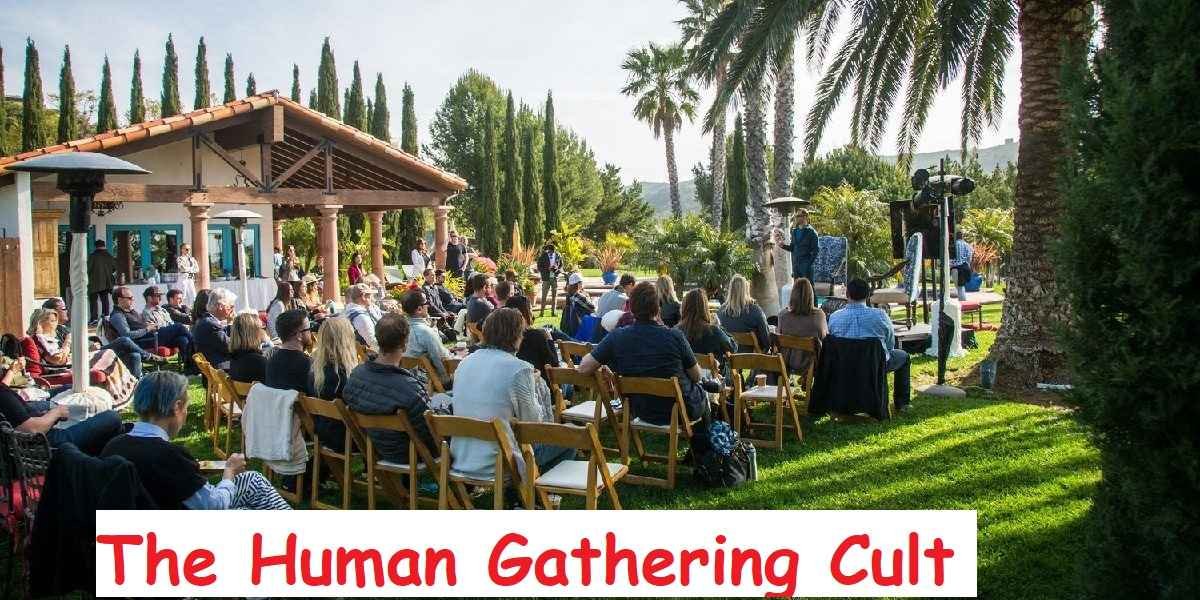Humanity has been drawn to communal experiences, rituals, and shared beliefs throughout history. These gatherings often connect individuals, solidify cultural practices, and provide purpose. However, the idea of a “human gathering cult” takes this innate human tendency to a unique and sometimes extreme level. Rooted in mystery, devotion, and often secrecy, the concept has piqued the curiosity of anthropologists, sociologists, and the general public alike. This article delves into the human gathering cult’s history, psychology, and cultural significance, exploring why it continues to captivate people’s imaginations.
What Is a Human Gathering Cult?
At its core, “human gathering cult” refers to individuals who come together around shared ideologies, rituals, and purposes. While “cult” often carries negative connotations, it can broadly refer to any organized devotion system. In the context of human gathering, it emphasizes the physical act of assembling individuals, typically for a greater purpose—whether religious, spiritual, or ideological.

A human gathering cult often revolves around a central figure, idea, or philosophy that binds members together. The gatherings are integral to the group’s identity, serving as spaces where members reaffirm their beliefs, participate in collective rituals, and strengthen social bonds. Depending on the cult’s size and influence, these gatherings can range from small, intimate circles to massive congregations of thousands.
The Origins of Human Gathering Cults
The phenomenon of the human gathering cult is as old as civilization itself. Ancient societies relied on communal rituals and gatherings to appease gods, celebrate milestones, and ensure social cohesion. For example, early agricultural societies often formed cult-like groups dedicated to fertility deities, organizing seasonal gatherings to pray for bountiful harvests.
In ancient Greece, cults such as those dedicated to Dionysus or Demeter involved large-scale gatherings, ecstatic rituals, and the sharing of secretive knowledge. Similarly, in ancient Rome, mystery cults like the Cult of Mithras provided exclusive membership and secret gatherings for individuals seeking spiritual enlightenment or protection.
These early iterations of the human gathering cult laid the groundwork for more modern forms, showcasing humanity’s intrinsic need to connect, share beliefs, and participate in collective rituals.
The Psychology Behind Human Gathering Cults
Why are people drawn to human gathering cults? The psychology behind this phenomenon can be explained through several factors:
- A Sense of Belonging
Humans are inherently social creatures, and the need for connection is deeply embedded in our psyche. A human gathering cult allows individuals to feel part of something larger than themselves. Members often experience a profound sense of belonging and unity by participating in group rituals and practices.
- The Power of Ritual
Rituals are powerful tools for creating meaning and structure in people’s lives. Within a human gathering cult, rituals can range from chanting and dancing to more elaborate ceremonies. These practices often create a shared emotional experience, fostering group cohesion and reinforcing devotion to the group’s ideals.
- The Allure of Mystery
Many human-gathering cults thrive on secrecy and exclusivity, which can be incredibly enticing. Being part of a group with “hidden knowledge” or special access to divine truths can make members feel privileged and purposeful.
- Psychological Transformation
Group gatherings, especially those that involve intense rituals or emotionally charged experiences, can lead to psychological transformation. Individuals may feel a sense of euphoria, transcendence, or personal enlightenment, which deepens their commitment to the cult.
Characteristics of a Human Gathering Cult
While human gathering cults vary widely in their beliefs and practices, they tend to share several common characteristics:
- Charismatic Leadership: Most human gathering cults are led by a central figure who commands devotion and often claims unique insight or divine authority. This leader is typically seen as the embodiment of the group’s ideals.
- Collective Rituals: Regular gatherings for ceremonies, prayers, or other rituals are a defining feature. These events serve to unify members and reinforce the group’s ideology.
- Exclusivity: Membership in a human gathering cult often requires initiation or a demonstration of commitment. This exclusivity creates a sense of identity and loyalty among members.
- Doctrine and Belief System: The cult’s philosophy is usually well-defined, with clear rules and expectations for members to follow.
Modern Examples of Human Gathering Cults
The human gathering cult is not merely a relic of the past. Modern society has seen the emergence of numerous groups that fit this description, though their goals and practices have evolved to suit contemporary needs.
- Spiritual and Religious Movements
Many new religious movements could be described as human gathering cults. For example, groups such as the Unification Church (the Moonies) or the Hare Krishna movement emphasize communal gatherings, rituals, and strict adherence to specific beliefs.
- Self-Help and Personal Development Cults
The rise of self-help movements has given birth to groups that function as human gathering cults. These organizations often host large-scale seminars or workshops where attendees participate in emotionally charged activities to inspire personal transformation. Groups like NXIVM are infamous examples of how self-help cults can evolve into manipulative organizations.
- Social and Political Cults
Human gathering cults are not limited to spiritual or religious contexts. In some cases, social or political movements can take on cult-like qualities. Large gatherings, such as political rallies or ideological conferences, can serve as spaces where individuals reaffirm their shared beliefs and devotion to a cause.
The Thin Line Between Cult and Community
It is essential to recognize that not all human-gathering cults are harmful or exploitative. Many groups that fit the “human gathering cult” description provide positive experiences for their members, fostering community, support, and personal growth.
However, a thin line exists between a healthy community and a manipulative cult. Warning signs of a harmful human gathering cult include:
- Exploitation of members (financially, emotionally, or physically)
- Isolation from family and friends
- Unquestioning devotion to a leader or ideology
- Suppression of dissent or critical thinking

The Cultural Significance of Human Gathering Cults
Human gathering cults reflect humanity’s deep-seated need for connection, purpose, and belonging. While some may view these groups with skepticism, it is undeniable that they play an essential role in shaping culture and society.
From ancient rituals to modern spiritual movements, the human gathering cult reminds us of the power of collective experiences. Whether for better or worse, these groups demonstrate how humans can come together to create meaning, share ideas, and forge lasting bonds.
Conclusion
The concept of the human gathering cult is a fascinating lens through which to examine human behavior and culture. From their ancient origins to modern manifestations, these groups highlight humanity’s enduring need for connection, purpose, and shared experiences.
While some human-gathering cults may be viewed with suspicion or fear, it is essential to approach them with a nuanced perspective. Understanding their psychological appeal, cultural significance, and potential pitfalls can help us better navigate the complex world of human gatherings. Whether inspiring profound transformation or sparking controversy, the human gathering cult remains a compelling and enduring aspect of the human experience.




